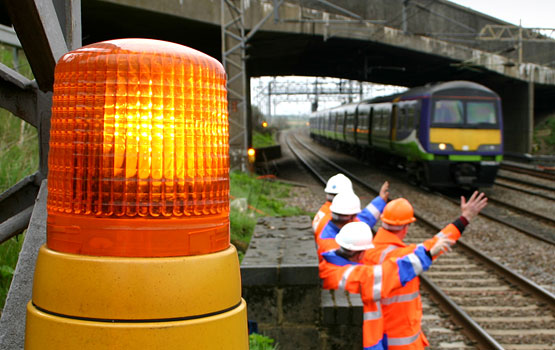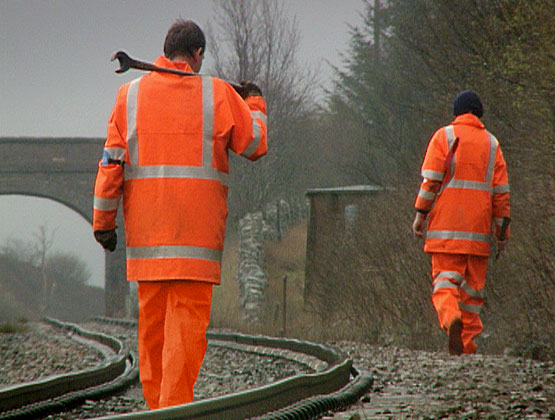|
While my heart is unequivocally supportive, two doubts rattle around my head when it comes to HS2. One is the affordability of fares. In 2012, it costs me £249 to get from Wakefield to London and back courtesy of East Coast. With the average UK salary for a full-time employee standing at a little over £26k, that represents more than three [calendar] days pay. With train companies attaching solid rocket boosters to their ticket prices, rail travel could soon be beyond the means of the occasional traveller, if it isn’t already. And of course high-speed services will carry a premium.
The second issue is the impact of technological development. Think back 15 years to a time when faxes were cutting edge; most of us were on dial-up and could only receive four TV channels. Now consider the past five years and the pace of change that’s been witnessed - smartphones and their apps, high-definition flatscreens, satnavs, fibre-optic internet connections. By 2026, businessmen will surely have HD videoconferencing and the ability to digitally ‘hand’ pieces of paper to someone in Australia. Perhaps you can do that now with a scanner/printer combo?
The Department for Transport claims that this argument is overstated, suggesting that advances in telecommunications have not historically reduced demand for travel. But this time, the two factors outlined above can conspire to make things different. Leisure travellers will be priced off high-speed trains while the cost imperative and time savings will tempt businessfolk to meet clients in virtual comfort.

One of the short-lived 'semi-permanent' ATWS installations at Leighton Buzzard.
When it comes to moving with the times, track safety is still awaiting the invention of the wheel. OK, Rimini packs and competence management systems both rely on computers, but what about human life beyond the access gate? In the 21st century, can’t we do better than detonators and flags? Fifteen years ago, the next big thing was the Automatic Track Warning System (ATWS). Landscape-changing in Europe, a hyperbolic promotional campaign by the Track Safety Strategy Group served only to raise great expectations; neither Network Rail nor its contractors showed much interest in them over here.
Bucking that trend a little were GTRM (remember them?) and Balfour Beatty who held hands to push Track-02 forwards. While the original ATWSs (ARW5/2, Minimel-90, IWS) were cumbersome and cabled, Track came in two flightcases with radio connectivity. But the latter had to be coaxed into life and was occasionally temperamental; positioning of the antennas was crucial. And instead of being set up by specialists, these delicate electronic devices were thrown in the back of vans for p-way gangs to play with; it then seemed to astonish managers when a step on the complex configuration flowchart was overlooked and a wrongside failure ensued. Track-02 did not survive long despite significant financial outlay.
Although not in large numbers, there are some ATWSs out there today and they are making a difference. But don’t let anyone tell you that they’re benefiting workforce safety. They’re not. You’ll find them at worksites where flank protection is needed for trains passing on open lines under 20mph TSRs, obviating the need for line blockages (formerly known as T2s) when roadrailers are performing. For short duration activities, the ATWS landscape is desolate as a consequence of the time and effort - and therefore cost - of planning and setting up each installation.
The same is true of LOWS - the ‘Emperor’s new clothes’ of warning systems. Network Rail’s substantial investment in these devices - which are about the size of a small frigate - was compromised by its failure to establish an effective set of procedures to manage all the peripheral fluff that attends the implementation of new equipment: a competence regime for the operators, a charging regime for the batteries, a maintenance regime for the equipment, a planning regime for each site to determine the time:benefit ratio. And then the ORR banned LOWS use at one depot because there was no diagram showing which direction the distant lookout should look! The whole thing had the hallmarks of a superficial exercise, allowing management to shout “look how committed we are to workforce safety”, without anyone first considering how the kits would be used. As a result, LOWS has been largely consigned to the cupboard.
|
| The whole thing had the hallmarks of a superficial exercise... |
|
More recently I’m told that NR has been getting its act together, with LOWS seeing use on track patrols. This involves a static lookout providing protection for part of an inspection before being leapfrogged by another who covers the next section, and so on until the end is reached. I assume they’ve acquired some new lightweight gear otherwise they’d need a fleet of HGVs.
On the surface, this seems like a step forward as fewer people are needed trackside. But this approach brings with it different risks as visual contact is not maintained between lookout and patrolman. The latter suddenly finds himself in one of the most vulnerable categories - a lone worker (see A D Little’s Root Cause Analysis of Red Zone Working). After a warning is issued, how does anyone know if he’s moved to a position of safety? Who’s there to watch his back in case the work consumes his attention?

The conventional patrolman/lookout combo.
Although a patrolman and conventional lookout can be somewhat detached from one another, an unconscious bond is formed by their physical proximity from which the man on the spanner derives reassurance. This move to LOWS strikes me as a product of risk aversion whereby the intent is simply to get as many men off-track as possible, irrespective of the consequential risks. Whilst superficially attractive, you do wonder whether there has been proper consideration of the attendant human factors.
All this adds to the thick soup of ones and noughts buzzing around in the ether. LOWS in any guise is no substitute for the automatic hardwired warning systems that the Europeans have had for years and we still enjoy on some main lines in the form of TOWS. Common sense would dictate that such turnkey simplicity should be provided at busy locations where disruptive line blockages would otherwise be demanded, or the layout and topography weakens the robustness of safe systems with lookouts. But even RAIB inquiry recommendations have not yet driven their integration into new signalling schemes. How hard can it be? How genuine is the commitment?
HS2 will no doubt follow in HS1’s footsteps, being a manpower-free zone whilst ever the trains are running. You can't get safer than that. The bigger question though is whether its trains will be largely devoid of humans too.
Story added February 2012
|